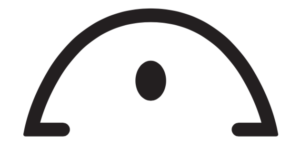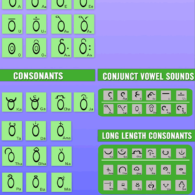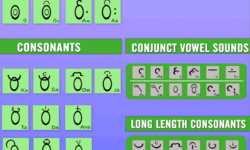Profile
Mukha Dora is one of nearly twenty scripts created by Dr. Prasanna Sree for indigenous and minority groups, mostly in Andhra Pradesh. In each case, the design of the script reflects some iconic feature of the culture of that linguistic community. She writes:Mukha Dora is a Dravidian language spoken in the tribal areas of Visakhapatnam, Srikakulam and East Godavari Districts of Andhra Pradesh in India. The Mukha Dora population numbers just over 40,000, according to the 2001 census, and about 30,000 of them speak Mukha Dora. Most also speak Telugu.
The Mukha Dora language is also known as Conta-Reddi, Nooka Dora, Nuka-Dora, Reddi, Reddi-Dora and Riddi.
Mukhadora is divided into several clans including Korra, Gammela, Kakara, Sugra, and Kinchoyi. The name of the clan is prefixed to their names. The elders of Mukhadora community wear the sacred thread and Tulasi beads.
Polygamous marriages are common. Levirate and sororate are permitted. Mukhadoras abstain from eating beef and pork.
They worship Bododevata, Jakaradevata, Sankudevata, Nishanidevata and Ganga devata. The most significant festival of Mukhadoras is Chaitra festival. They celebrate festivals in the honour of their deities.
Most of the Mukhadoras have settled in agriculture and they supplement their economy by the collection and sale of minor forest produce. They claim social status just below the Bagatas in social hierarchy in the tribal areas of Visakhaptnam District.
The Mukha Dora people gather rudraksha or elaeocarpus ganitrus, a large evergreen broad-leaved tree whose seed is traditionally used for prayer beads in Hinduism and Buddhism. The Mukha Dora are disciples of Lord Siva, often seen with ash-smeared bodies and wearing Rudraksha strings round their neck. The common design element in their script, then, is a rudraksha seed.
You can help support our research, education and advocacy work. Please consider making a donation today.


